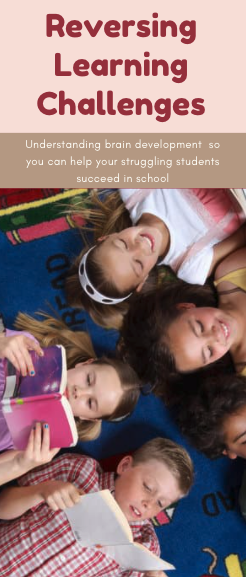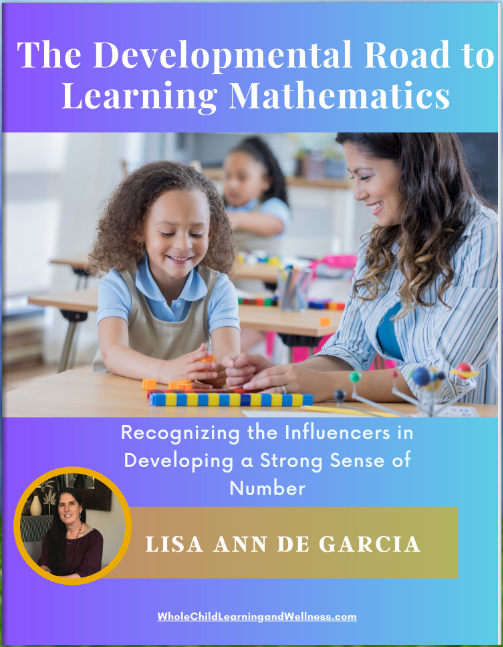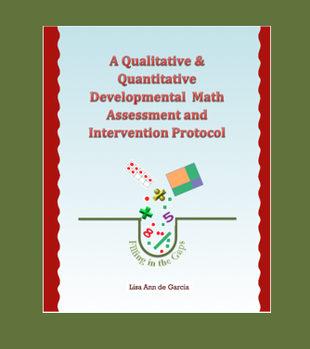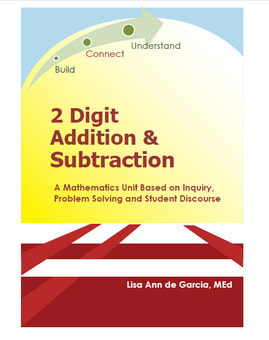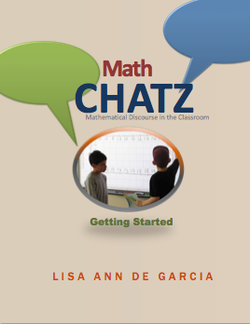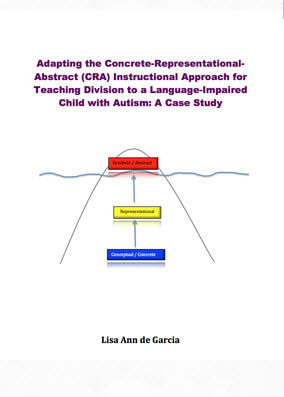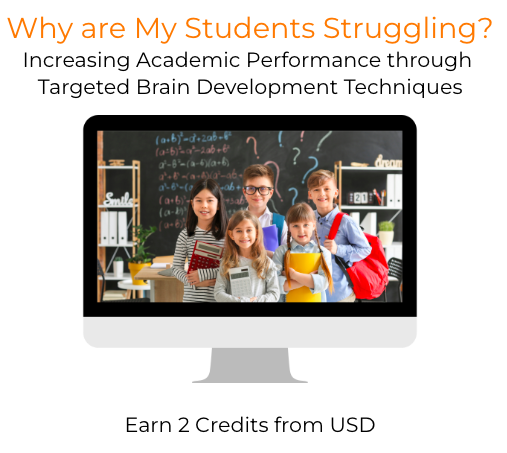
Help your students reach their full potential!
There is a way to finally help your students overcome their learning or behavior challenges .


Teachers, Professionals, and Schools
Optimizing Learning, Behavior, and Health with Kinesiology, Neurofeedback, & Nutrition

I help you help children become balanced and integrated so they can be calm, responsive, and thrive in school.
As an educator for nearly 25 years, I understand the challenges that the modern child faces. Unfortunately, teacher education programs do not prepare us to recognize the foundational pieces children may be lacking in order to achieve to their potential. It is my mission to help educate and equip teachers and administrators so they know how to address underlying issues related to difficulty in reading, writing, and mathematics, resulting in improved learning and achievement.
There is Hope!
Do you have students…
…missing most of the information or directions the teacher is giving during class? Does s/he blurt out the answers without being called on? Maybe s/he is not learning simple things, like colors or math facts, despite spending hours trying to memorize them?
… experiencing anxiety in social situations or is painfully shy? Do you see them sitting alone on the playground or perhaps cry when called to the front of the class? Perhaps s/he is hypersensitive either emotionally or physically and falls apart at a drop of the hat. Maybe you find students melted to the floor during instruction time or flying around the room unable to stay in a chair.
… who have a difficult time expressing thoughts either orally or in writing? Do you know that they are brilliant, but they cannot effectively produce work? Maybe participating in PE is painfully difficult due to a lack of coordination.

To support the brain development of our students through increased sensory input, neuro-developmental activities, and the reducton of external stressors.
How Does the Brain Grow?
Ironically, as teachers, we are responsible for the brain development of our students, yet we are never taught anything in our teacher training programs about how the brain grows. After all, when children learn, they are making neuronal connections in the brain, but how does the brain develop after all?
Interestingly, even though the baby is born with an intact brain, it is not yet wired up. It is kind of like getting a computer out of a box and needing to hook it all up. How does this linking take place? It starts by developing the brain stem through the integration of the reflexes the baby is born with. Babies do this through rhythmical movements they do. You may have seen babies, for example, rock back and forth on their hands and knees. They are doing this in order to help integrate one of their neck reflexes and to prepare for crawling.
Well, these reflexes live in the brainstem, along with other automatic functions of the body, such as breathing and heartbeat. When the reflexes get integrated, the movements that develop move to a higher part of the brain, thus, making connections.
We can tell where a child is stuck developmentally by their movement patterns. Some are stuck in fight or flight (living out of that reactive brain stem) and some are unable to cross the midline, causing lots of problems in the classroom. Academics and executive functions are the last skills to develop, from the pre-frontal cortex. Children who haven’t appropriately made connections to the higher parts of the brain will experience a very difficult time in a school environment.
Below, is an illustration of the phases of brain development. As a teacher, you can see that academics are at the top, but in order for learning to be effortless for the child, everything underneath needs to have been addressed.
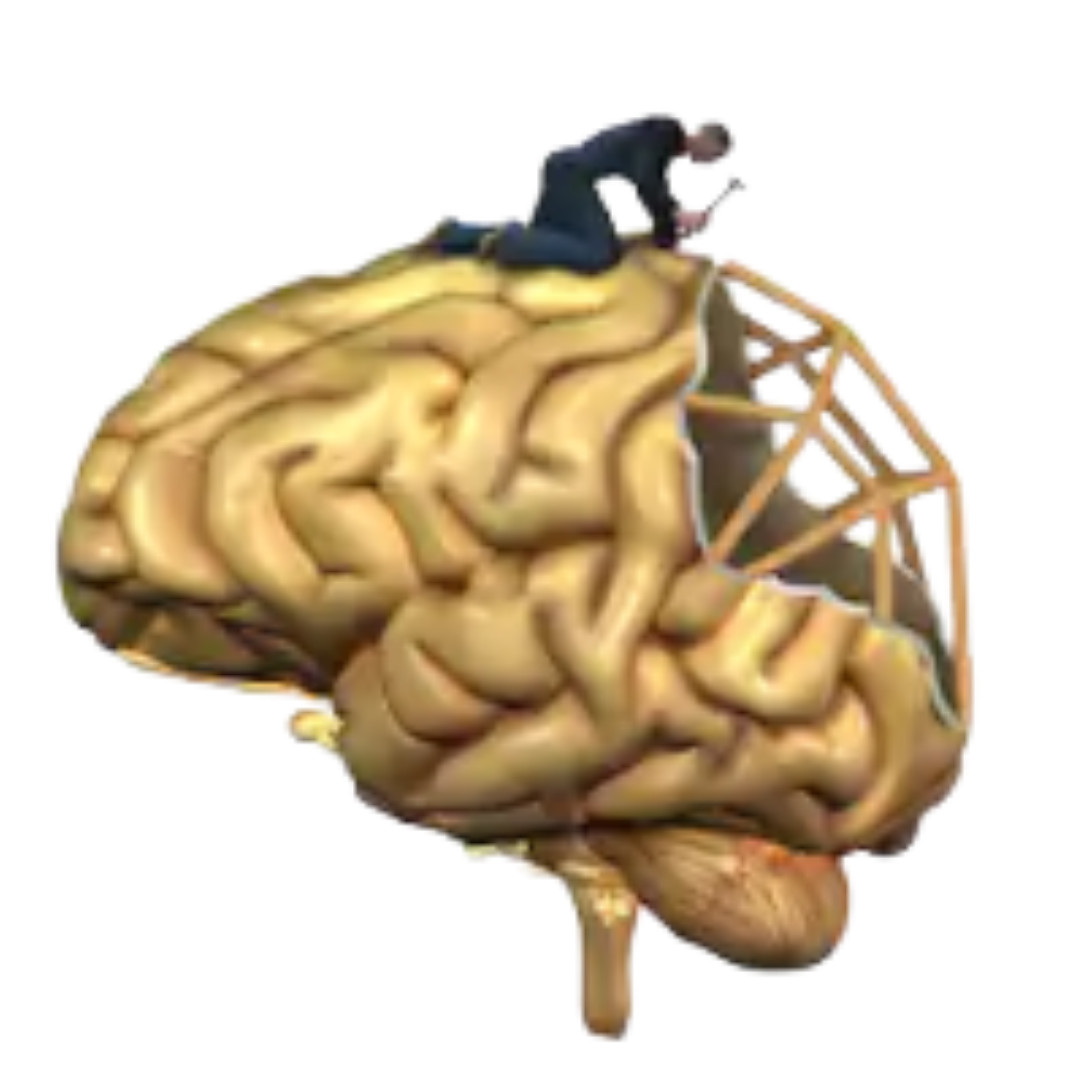
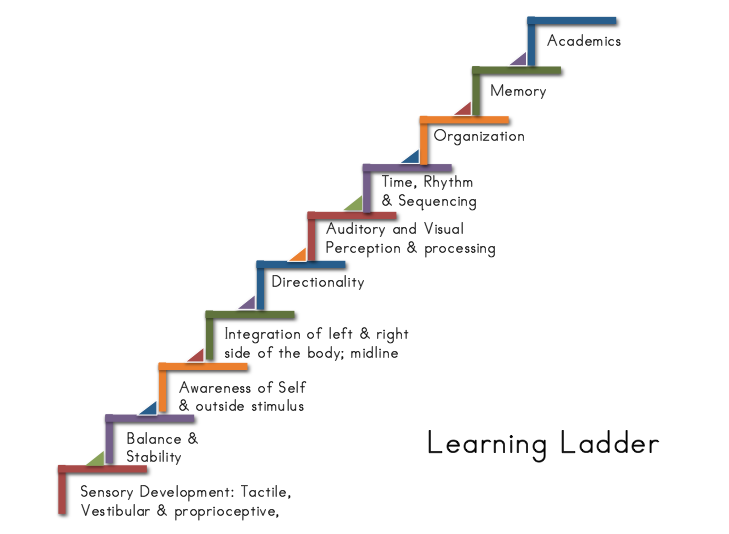
The Learning Ladder ©2015 Lisa Ann de Garcia
Schools need to re-think how they are support their struggling students. Most always, IEP’s only help children cope with their deficits, not do anything to help the child be free of the deficit.
To learn more about the role the school should take in order to genuinely help children who struggle with learning, behavior, and motor development, please check out my blogpost: A Paradigm Shift in the Educational System for Support of our Struggling Learners
How Food Affects Learning and Behavior
Foods have a tremendous and powerful impact on the learning and behavior of our students. Teachers repeatedly report that students have decreased attention and increased outbursts after lunch. Find out why with this presentation that you can share with the stakeholders at your school, and rethink the impact food at school may have in the health and wellbeing of your students.
Online Courses
Get trained in exactly what is going on with your struggling students and what to do about it…today.
•Why are My Students Struggling? (qualifies for 2 credits with USD)
•A Qualitative and Quantitative Math Assessment & Intervention Protocol
See other self-paced mini courses here.
Live Courses & Workshops
I am available to teach a variety of short or multi-day courses and workshops to school faculty and administrators around how children learn and things that can be done at school to enhance brain development. Courses include:
•Brain Gym Get flyer
•Blomberg Rhythmic Movement Training Get Flyer
•Neurodevelopment and Setting Up a Motor Room
•Activities for auditory & visual processing, memory, focus, and cognitive development
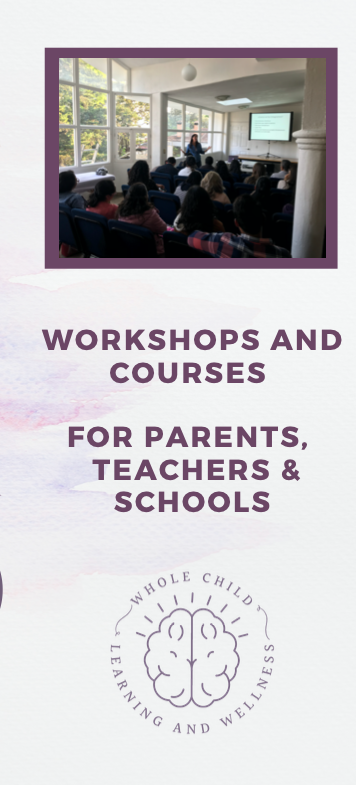
Learn How to Establish a Movement Room or a Before/After School Group

Allow me to help your school set up a movement room which classes can rotate through to support optimal learning of students. This benefits all students, but can also be used for a pull-out program for struggling children or those receiving special services.
Do you have children that struggle, yet do not seem to qualify for special services? A morning or after school movement program may just be what they need. Help children to integrate their primitive reflexes and sensory motor systems to prepare their bodies and brains for learning.
If you or your school is interested in a done-for-you Movement program that will lead your students from their desks, click below for more info (this is an outside resource).

Resources for Teaching Mathematics In the Elementary Grades
My publications around teaching elementary mathematics, primarily to struggling children, are featured in the gallery and are available on Amazon.com here.

